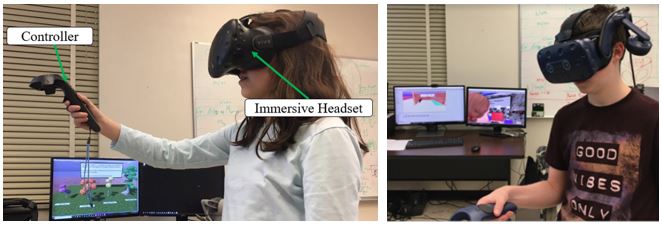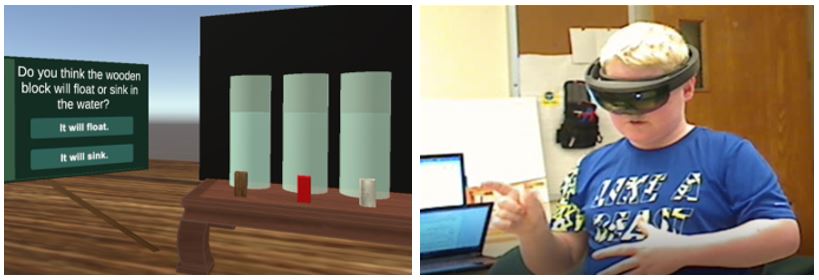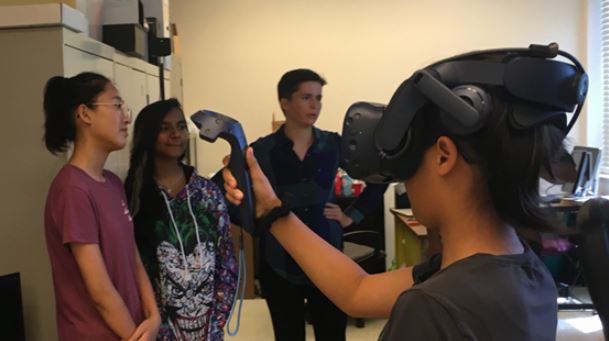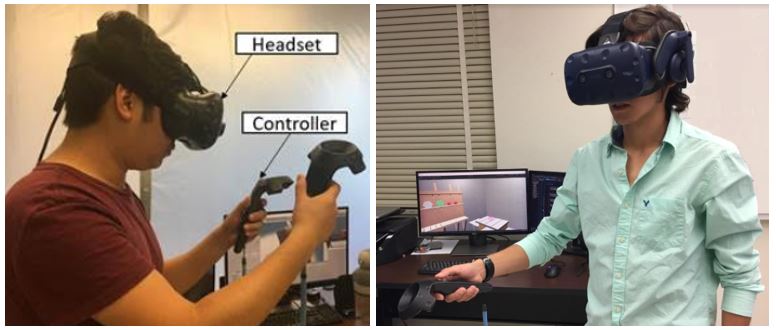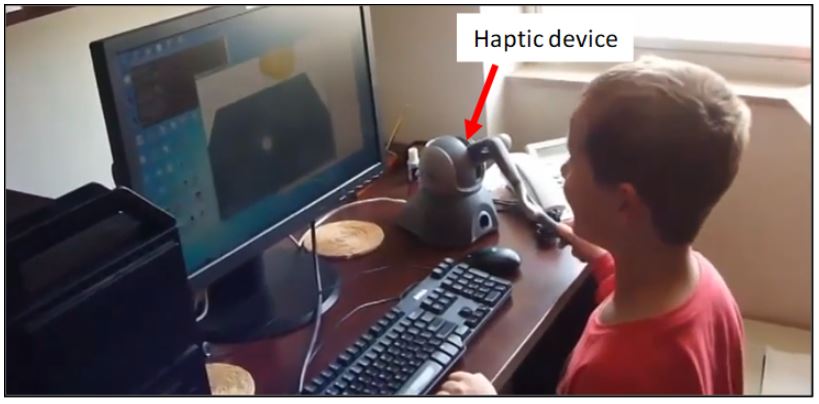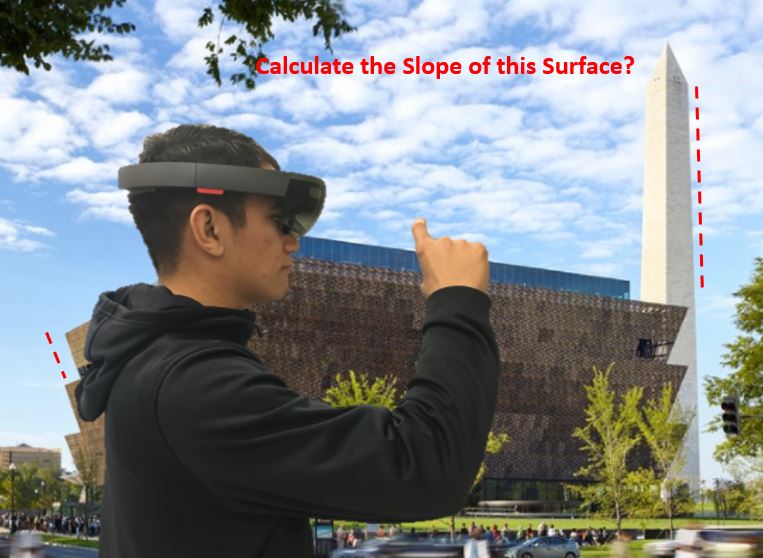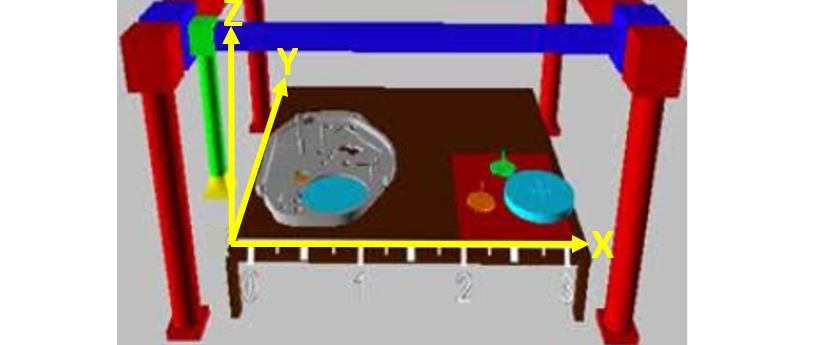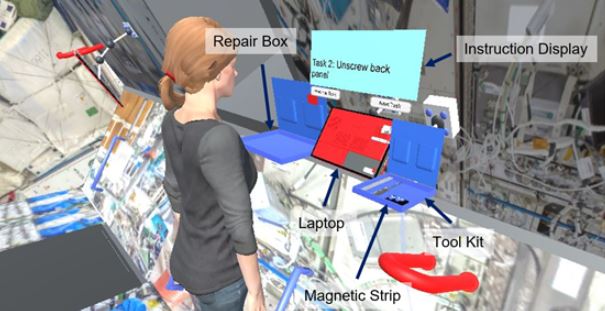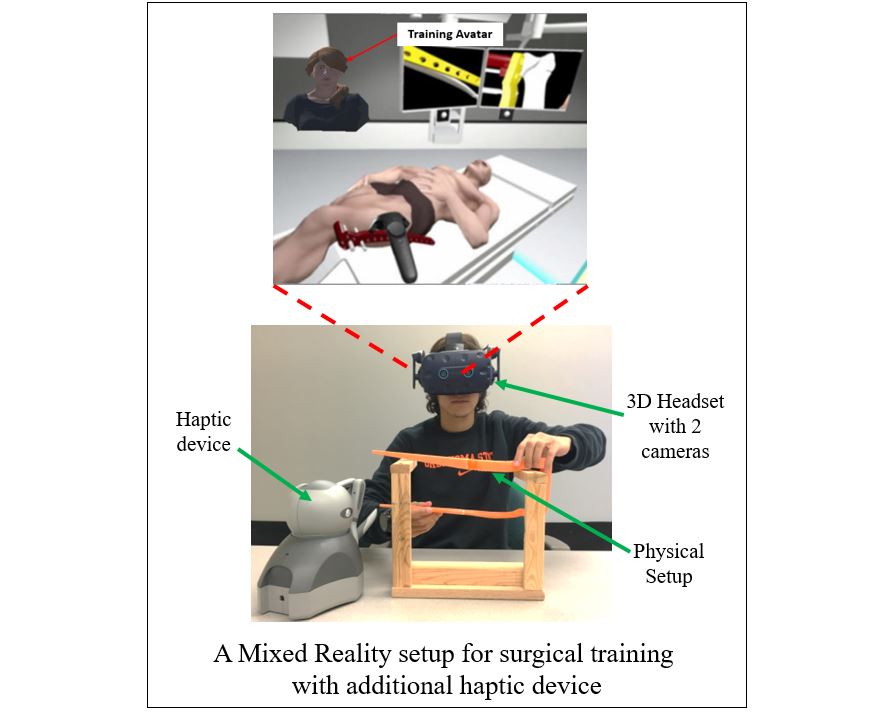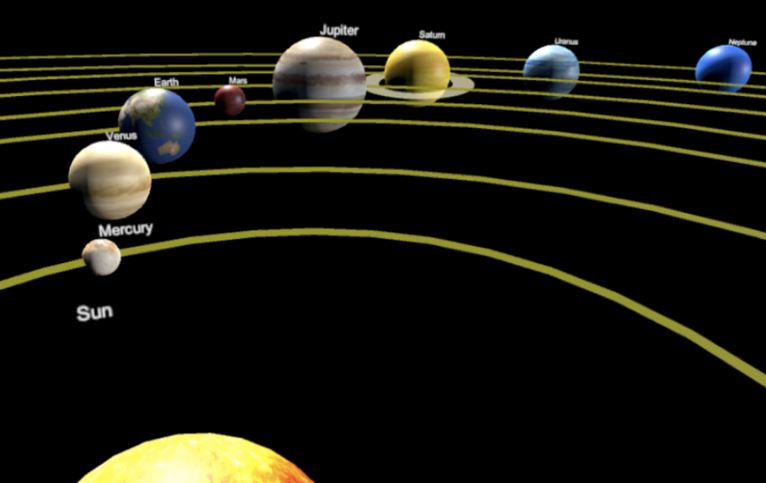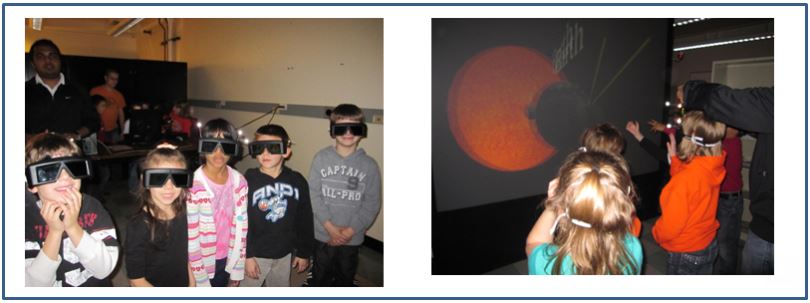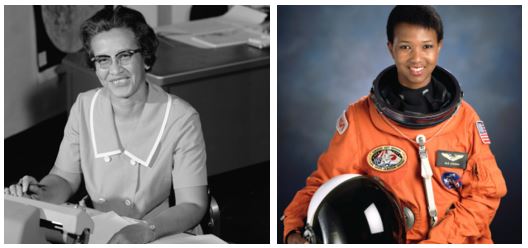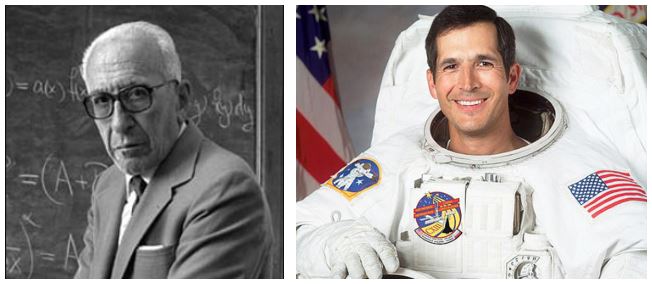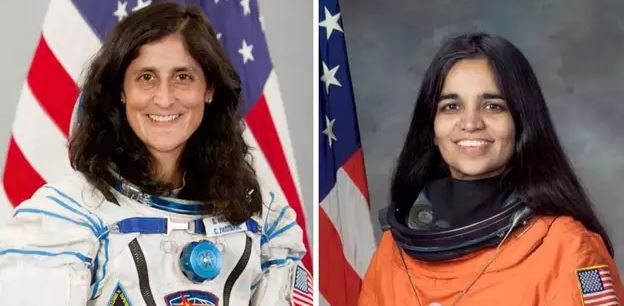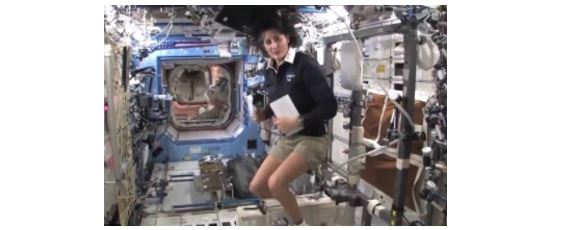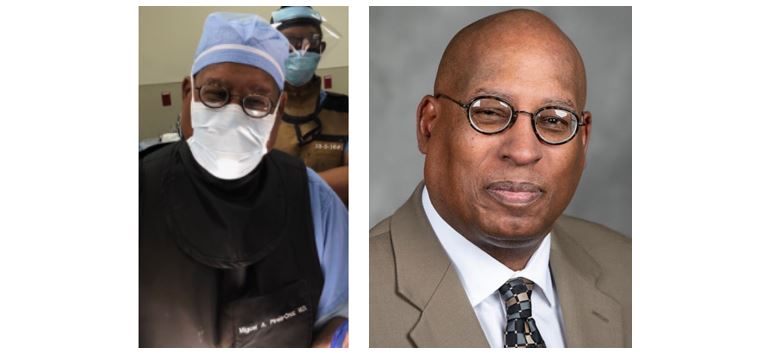Our Soaring Eagle STEM Learning Initiative
Cecil was featured recently in a PAESMEM web discussion along with two other educators on their experiences and resources for Computer Science Education across elementary, secondary, and post-secondary education.
Our director, Joe Cecil, created the Soaring Eagle STEM initiative in 2000 when he was at New Mexico State University. After working in industry in the Houston area for several years, he became a junior faculty and quickly realized the need to work with K-12 educators to inspire and engage school students towards STEM programs and careers. He called this grass-roots initiative Soaring Eagle for several reasons. An Eagle is a powerful symbol of strength and freedom; our program like an Eagle, seeks to encourage our students to soar to great heights in life. An Eagle is also a symbol holding special meaning and significance to many ethnic cultures including our own First Nation peoples, Aztec civilization and other cultures in this world. The word ‘wanbli’ meaning Eagle, is of Native American origin. Cecil was blessed to be given an opportunity to work closely with students, teachers and parents of the (then) nearby Mescalero Apache Schools (in Mescalero, New Mexico which is not too far from Las Cruces, home to New Mexico State University). The Eagles are also national birds of our nation (USA), Scotland, Afghanistan and other countries.
A Soaring Eagle
Our partners include students, school teachers, parent, entrepreneurs, industry leaders, administrators, minority alliances, government and private foundations. We have worked with Stillwater Public Schools as well as schools in the Mescalero Apache Schools (New Mexico), Anthony Public Schools (New Mexico, Texas), and Las Cruces Public Schools (New Mexico). As part of another initiative targeting autistic students, we are working with individual students/parents at various schools in Oklahoma City/Norman area learn STEM. We are also currently starting new collaborations with schools in Tulsa and Oklahoma City. Through the Soaring Eagle activities, we have impacted nearly a thousand minority and other K-12 students and encouraged them towards STEM programs and careers.
We recognize the importance of K-12 STEM education and the need to work closely with all students, parents, teachers and schools to motivate and excite them about STEM learning and careers. The Soaring Eagle program was created in 2000 with the objective of exploring and implementing novel ways to learn STEM concepts especially focusing on under-represented minority students. It is intended to provide a broad umbrella under which interested stakeholders can come together to discuss, explore and implement novel ways to teach science, engineering and math to elementary, middle and high school students.
We have also recognized that the effectiveness of any engagement or learning approach needs to support as many of our human senses as possible: touch, sight, hearing, smell and taste. Among these five senses, emerging and rapidly developing technologies can enable students to be ‘immersed’ in a learning-friendly and exciting ‘environment’ which involves use of a student’s visual, haptic and aural senses. Introducing smell and taste are going to be more challenging but we are optimistic that sometime in the future technological breakthroughs will occur which support experiencing these senses, which can further enrich our learning process.
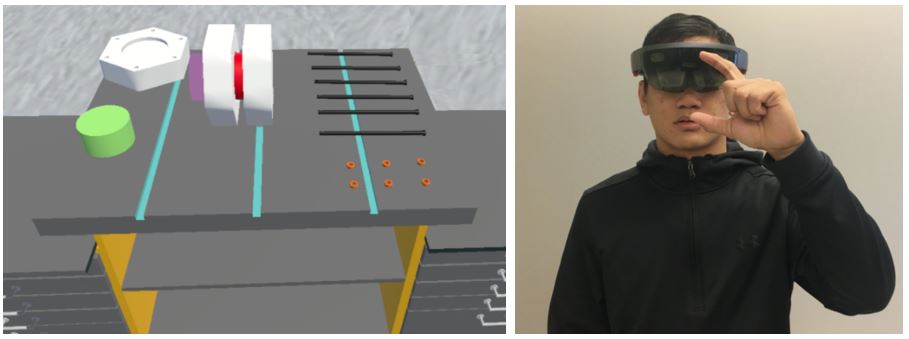
For minority and other students, we have observed from our direct experiences that often 'transporting' them to a learner friendly virtual world makes them more receptive to new ideas and concepts. This virtual world can provide a safe, encouraging and stimuli-rich environment which allows each student to respond in a natural or intuitive manner. The majority of our students who have interacted with our virtual environments become alert and engrossed in the learning process without realizing they are involved in a learning activity. Such an environment encourages students to explore and propose alternate ways to solve a problem, without fear of making mistakes as well as facilitate a student to repeat a specific learning module as many times as possible at their own pace. While our teachers put in a great deal of effort, we have to recognize that it’s not an easy task to reach out and impact all students. We see the role of such Virtual Learning Environments as providing such mediums for all students to be excited about learning new ideas. In a philosophical context, we see the outcomes of learning as giving students an ability to become mature citizens of this world, who in turn can help others realize our full potential.
(above) High School Students learning Assembly and Robotics concepts using immersive VLEs (Vive platform)
Our pioneering work in K-12 education focuses on the adoption of cyber learning approaches which support different learning styles (from visual to kinesthetic) among students while facilitating experiential and active learning. We have designed and built Virtual/Augmented Reality based Virtual Learning Environments (VLEs) in support of these innovative learning approaches that both engage and help minority and other students learn more effectively.
Recently, in Aug 2020, Professor Cecil was awarded the 2020 Presidential Award for
Excellence in Science, Mathematics and Engineering Mentoring (PAESMEM), which is administered
by the US White House Office of Science and Technology Policy (OSTP). In 2020, Cecil
was one of the 15 PAESMEM recipients.
Our students live in a cyber-intensive world. The adoption of cyber learning approaches facilitate virtual hands-on learning through virtual experiments in simulation based environments that encourage students to explore a target problem in 3D, propose candidate solutions, compare alternatives and select the most feasible solution. We have teamed with educational psychologists to design VLEs based on Applied Behavioral Analysis (ABA) principles. Our past work has demonstrated the impact of such cyber learning approaches (supporting immersive and haptic interactions) to improve learning outcomes and increase student engagement for minority, autistic and other students [Cecil 2013, 2018, 2020].
Through the Soaring Eagle program, we offer free STEM workshops to both teachers and students as part of our long term effort at creating an early interest among school students in engineering.
Snapshots of some of these VLEs are provided below.
A Middle School Student exploring density concepts using a VLE (left) using finger based gestures (right) with a HoloLens
Algebra Learning
We are also interested in creating culturally-relevant learning contexts in 3D scenarios that can help minority students relate to target algebra concepts. For example, by creating a 3D model of the Chichen Itza pyramid (Mayan, pre-columbine in Yucatan, Mexico, see below), basic concepts relating to slope, system of equations, fitting a line, etc. can be introduced to high school students.
Virtual and Physical Views of the Chichen Itza pyramid, which can be used to learn calculating slope, how to write equation of a line, and other algebra-1 concepts; such Mixed Reality based environments hold the potential to substantially impact the engagement and learning of K-12 students.
Views of two different VLEs: (left) top view of a VLE which uses the layout of a building with rooms to teach geometry concepts such as area, perimeter as well as distance between two points; (right): front view of another VLE to teach students engineering applications (such as robotic path planning concepts to highlight importance of learning of algebra-1 concepts in engineering applications).
High school students exploring assembly and geometrical concepts using an immersive VLE
Students interacting with the VLEs using the fully immersive Vive Platform
A link to an excerpted video of student interactions inside a VLE is provided below: this is a module which provides an avatar based interactive capability to train students on how to use the VR controller (for the Vive platform) to navigate a sample virtual environment; students get an opportunity to learn how to use the various controller buttons to walk around/pick up objects, etc. inside a 3D learning environments; here is this link
A student explores floatation concepts in a VLE using a haptic (touch) interface
Creating Virtual Adventures
Some of our future work involves creating VR/MR learning environments around the virtual adventure or exploration themes; we are interested in students and their families jointly learning algebra concepts using outdoors (nature areas such as near Mt. Kilimanjaro, Tanzania, Africa) or exploring unique urban areas; both contexts can provide algebra rich contexts to learn/explore about slope of lines/surfaces, forming an equation connecting two points, etc.
Mixed Reality based VLEs involving unique architectural landmarks (such as the National Museum of African American History and Culture in Washington DC, below) can provide interesting urban contexts for learning algebra. Other cyber-physical learning environments can be created involving themes of outdoor skate boarding parks, home, stadiums, and other locations, which can also provide unique contexts for introducing concepts of slope, how to calculate and compare slope values, geometrical properties such as perimeter/volume, trajectories, and system of equations, among others.
A student interacting with a HoloLens based Mixed Reality VLE using finger gestures
KOCO TV (Oklahoma City, ABC news affiliate) carried a news report about this project recently. Read More.
KOCO TV (Oklahoma City, Channel 3 ABC affiliate) had a news report about our work involving using VLEs for teaching STEM to autistic students; this initiative is being funded by State of Oklahoma.
Dr. Cecil wrote a guest editorial in the Tulsa World (Aug 24, 2020) on the importance of attracting minority students to STEM programs and encouraging them to STEM careers. Read More.
A VLE to introduce students to x, y, z axis and related equations
A VLE created to reinforce geometrical properties/formulas, system of equations and related math/engineering topics to high school students; this VLE was built based on scaling down a 3D simulator created for training astronauts on the Gateway, which is a key part of NASA"s Moon Mission. Using space related contexts has proven to encourage students towards STEM careers
We have created several learning modules to teach science and engineering concepts related to assembly sequence, predence constraints and robotics using NASA 2024 Moon Mission contexts. Our group is active in the NASA X-Hab Challenge contests at the university level. We typically scale down some of the VR/MR simulators created from recent projects and use them as contexts for K-12 STEM learning.
Left: Learning engineering concepts through interacting with a Mixed Reality (MR) based VLE to teach path planning, calculation of lines connecting several points in 3 D space, etc; this was scaled down from a simulator created to train astronauts move payloads inside NASA’s Gateway (the 2024 Moon Mission contexts)
Right: A student interacts with a teaching avatar inside a Virtual Reality based VLE designed to teach assembly, slope, sequence concepts
A recording showing an avatar giving instructions during assembly learning session. The avatar calls out the steps and then shows the user what to do. The user can complete the tasks interacting with the physical world. Such both virtual and physical world interactions is possible when a student is wearing a Mixed Reality (MR) headset such as the HoloLens or HoloLens 2. Link here.
A view of a Mixed Reality (MR) based learning environment with a haptic device; such VLEs enable students to interact with virtual and physical worlds simultaneously. The haptic device enhances the learning experience by supporting the sense of touch. In the above VLE, a student is exploring how a medical surgical step can be studied virtually (using the simulation environment running on the headset) and then physically can complete or perform relevant physical steps in the physical (real) world using this unique MR based VLE.
A view of a Non Immersive (NIM) VLE which can be run on a tablet or laptop; here the students don’t need a 3D headset or stereo eyewear. They interact using mouse and keyboard; such a NIM VLE can be a low cost alternative to immersive VLEs and can be accessed by students from their home through a cloud (from laptops and tablets).
A Non Immersive VLE to learn solar system concepts
We also have a PowerWall to support semi-immersive learning. We have used this to teach math and science concepts to elementary and middle school students. The images below provide snapshots of Sangre Ridge students (in Stillwater, OK) and teachers interacting with some of these virtual learning modules.
Images (left and right) from Soaring Eagle workshopsheld at CINBM.
First graders explore the solar system using a Virtual Reality environment created to support learning of science and math concepts. Stereovision eyewear worn by students (left) is used to interact with the 3D virtual environments (also referred to as virtual prototypes); navigation by students and teachers is through controllers and tracking sensors. As this is an immersive environment, the 3D images on the screen appear blurry to others not wearing stereovision eyewear.
Our recent activities involving helping autistic students learn STEM topics are outlined here: (Autism Project Link )
Importance of Role Models and Linking importance of STEM learning to exciting and practical applications
We have also recognized that it’s important for math and science teachers to highlight positive minority and other STEM role models in their class and learning discussions. Including focus discussions on the educational background of minority, women and other astronauts, scientists and mathematicians has a powerful impact on minority and other students, which in turn can translate into greater level of engagement when learning math/algebra and science concepts in class. We have adopted such aspects into our Virtual Learning Environments.
Another key aspect recognized by educators (such as [Hale 2016]) is being able to make practical connections or links from the sometimes abstract theory of calculating slopes or forming equations to real world problem solving and applications in various engineering, architectural and scientific contexts. In our experience, providing a virtual snapshot of an engineering application (through a well-designed 3D simulation based learning experience) can have a significant impact on helping students understand why a specific algebra or science concept is important and how it can be used to solve practical problems; such an understanding is important to students as they progress through higher grades both in K-12 schools and at Universities pursuing STEM degrees.
Some images of minority and women STEM role models are included below. Our STEM stakeholder teams has engineers, doctors, surgeons and scientists who provide input on including content emphasizing such role models.
Katherine Johnson, NASA Mathematician (left) and Mae Jemison, African American engineer and physician, first African American astronaut (right)
left: Alberto Pedro Calderon, Latino mathematician
right: John Herrington, first Native American astronaut (Chickasaw Nation)
Many other women are strong STEM role models as NASA astronauts with backgrounds in science and engineering.
Sunny Williams (left) and Kalpana Chawla (right)
Astronaut Williams aboard the International Space Station
One of our team members is Dr. Miguel Pirela Cruz, a micro/orthopedic surgeon and a STEM role model in his own right
ALL interested students, parents, teachers and administrators are always welcome to contact us (j.cecil@okstate.edu) regarding how to use our VLEs or participate in our free workshops.
Our past work has been funded by
Mozilla Foundation
NASA NSF
US IGNITE OCAST



